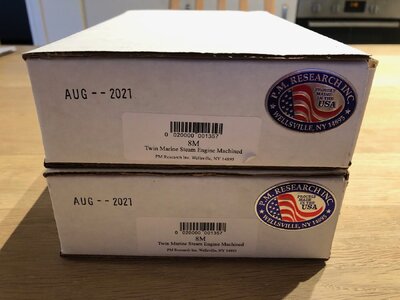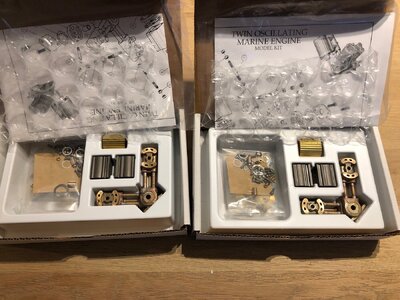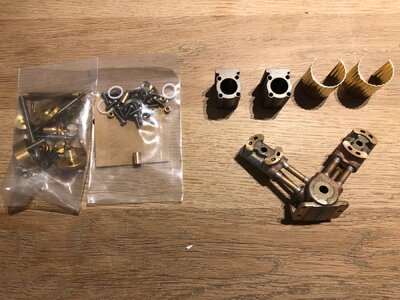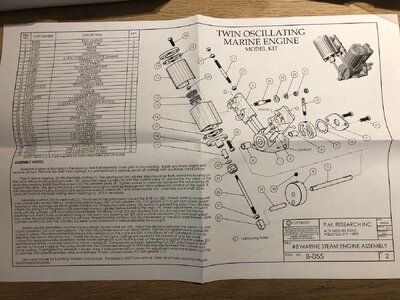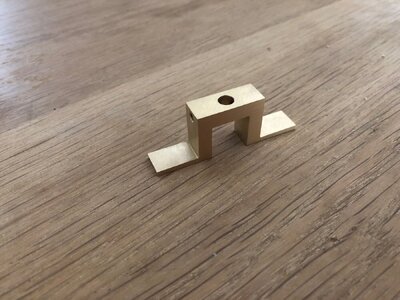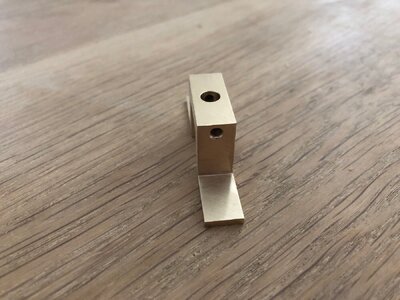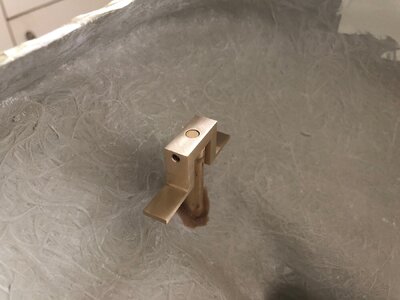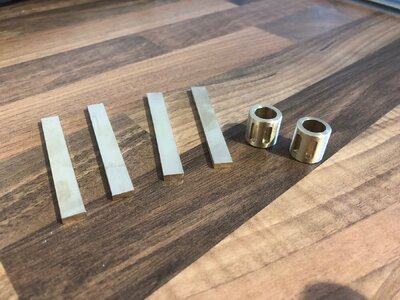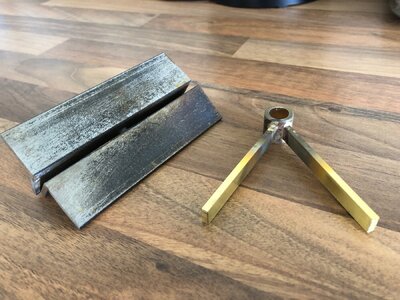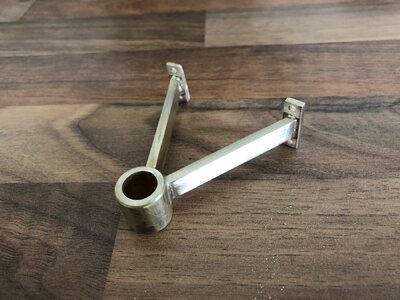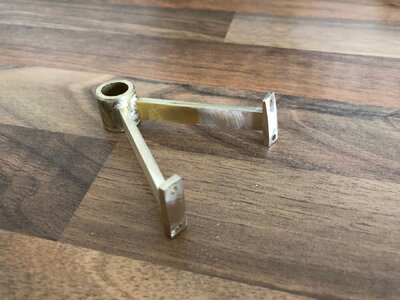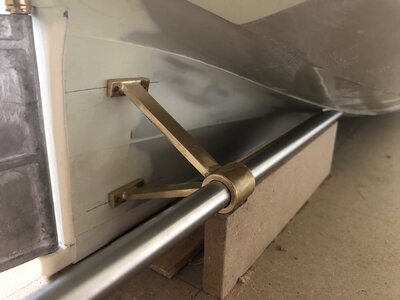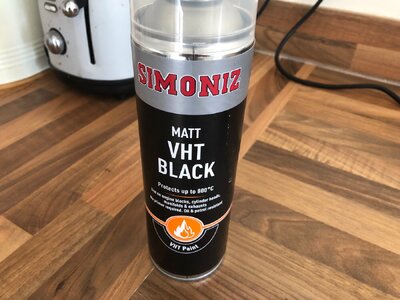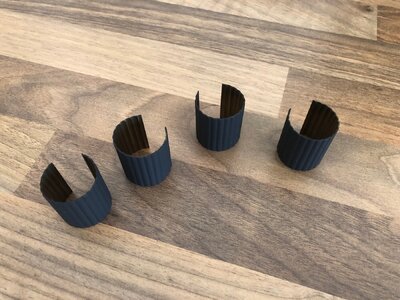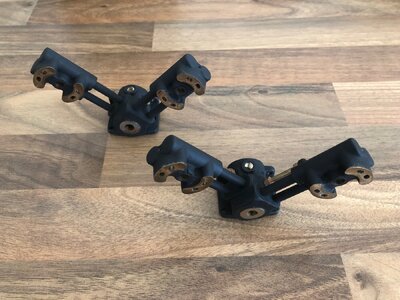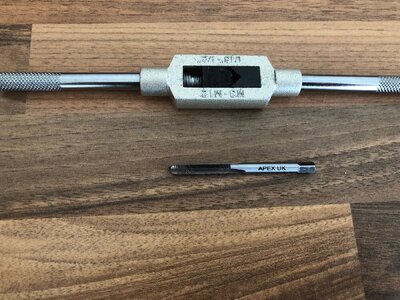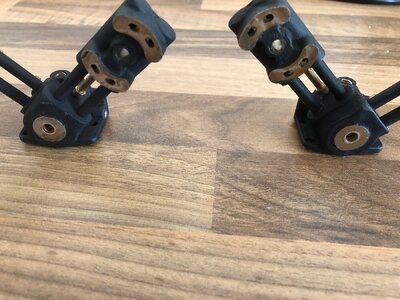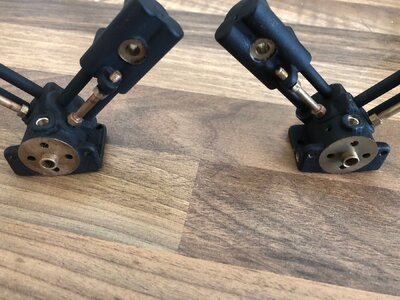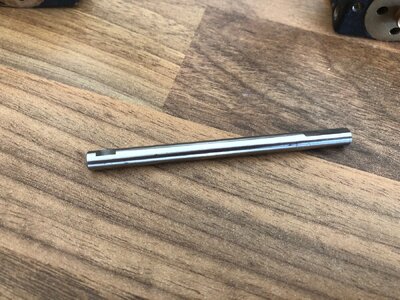Thanks Uwe
Now there is a "double whammy" to this project.
Originally I had intended to make the complete steam plant from scratch for this model and obtained drawings for a small plant. I also obtained a book which covered making the engine in brief detail.
The engine was of a Vee Four design with 8mm bore by 13mm stroke. My intention was a single propeller to drive the model.
Two things bothered me with this design, firstly this was not prototypical and secondly the stern post is so wide, half the 65mm prop, the largest that would fit, would be half covered by the post.
I considered two of these engines on twin props but the maximum prop size for this Vee Four is @65mm, far smaller than the prototypical scale size of 85mm diameter.
The drawing package I received covered EVERYTHING for the Steam plant including the boiler. I did some research into the "red tape" of DIY boilers in the UK. This is a legislation nightmare as it is a pressure vessel and you must have a test certificate if you take the model out in public. This also needs retesting every two years. I could set a simple rig up to pressure test the boiler with water as the pros do it as it is the same system for testing central heating systems, however I am not qualified to produce the certificate.
So where am I going with this, well despite purchasing the two PM research engine kits which I will build soon ( I have been waiting on a tap for the steam inlet and exhaust) I am still going to build the engine I have drawings for. I had priced up the additional tooling and materials to build this engine, the outlay makes it unviable for one engine so I am going to build several

Four is the figure in my head at the moment. It gives me the option to sell a couple if I so choose.
A comment by Paul AKA docknatter as to some people having the ability to machine metal parts has encouraged me a little with this. I will be doing a build log for these engines in the "lathe, mill etc" section and will try to cover all aspects of the work.I will also be using some "mass production" techniques as I am building more than one engine.
The engine was designed by Peter Arnot, a very talented model engineer and was featured in a long run of articles in Model Boats magazine back in 1993. I suspect that Peter may no longer be with us but I haven't been able to confirm this. The engine is a four cylinder double acting Oscillator engine with RC controllable reversing valve
Marine Modelling Magazine who published the Plans sadly are long gone. Fortunately these are available now from Sark Hobbies in the UK. The drawings are over two massive sheets with individual drawings for every part including boiler, valves and even a crankshaft driven water pump which I will also be making.
This is a complete sideline to Imara and is more about the challenge of making my own engine from scratch. I have the option if I choose to mount one ore more of these engines in a future model if I so chose.
I include a small snippet of the drawings to give you an idea of what I am dealing with, but not enough to get me into copyright bother.
Kind Regards
Nigel
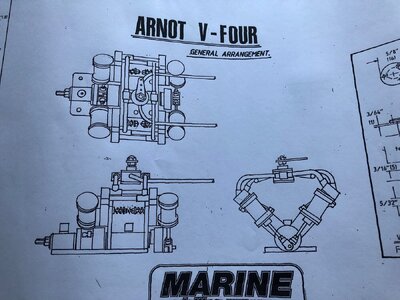
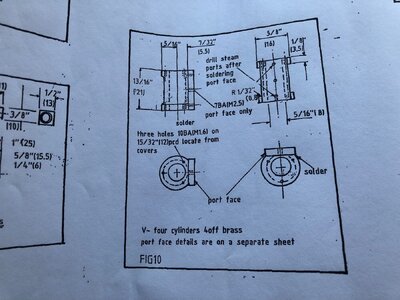
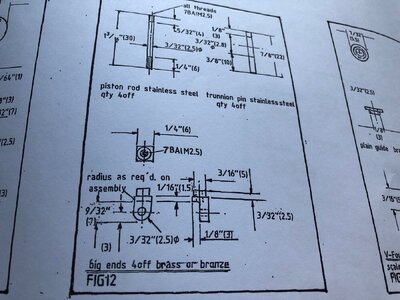
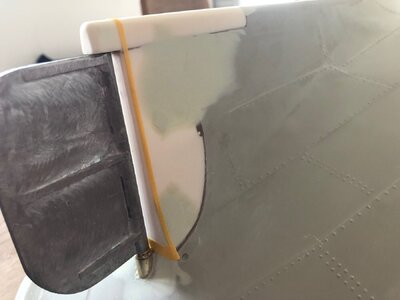
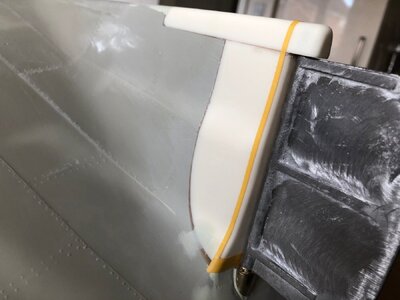
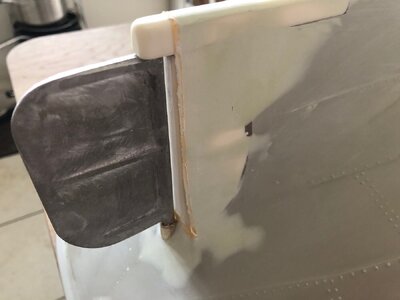
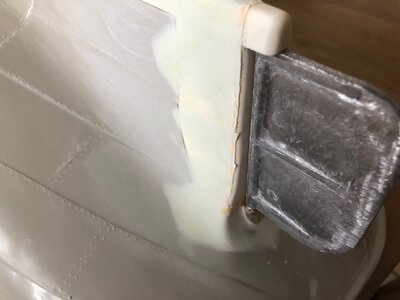
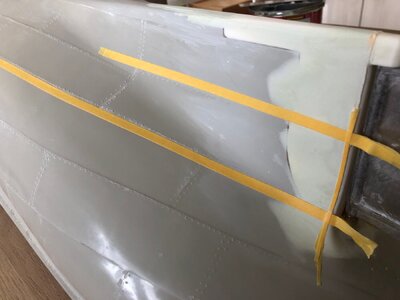
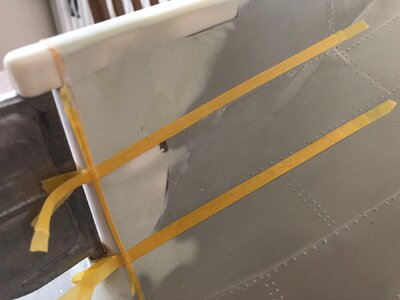
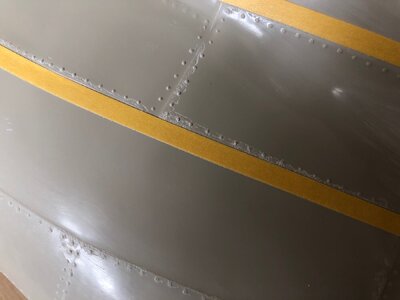












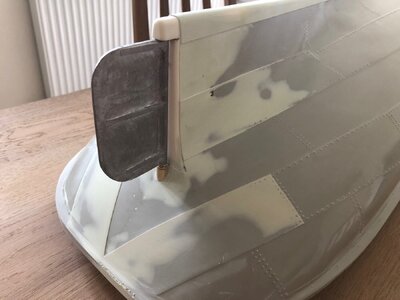
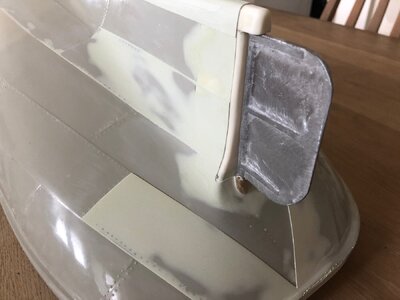
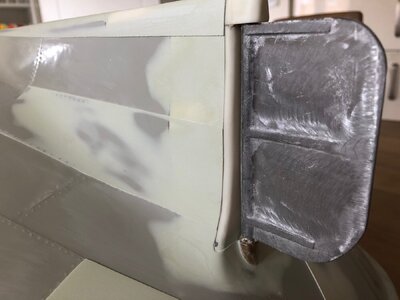
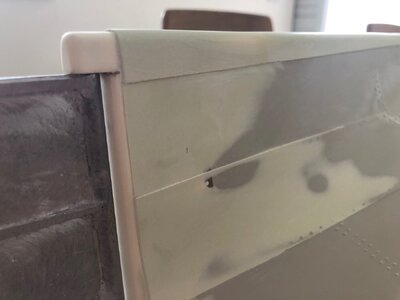

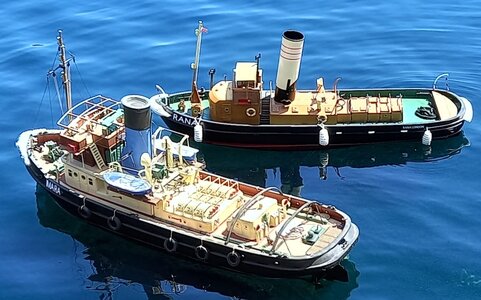



 Four is the figure in my head at the moment. It gives me the option to sell a couple if I so choose.
Four is the figure in my head at the moment. It gives me the option to sell a couple if I so choose.


